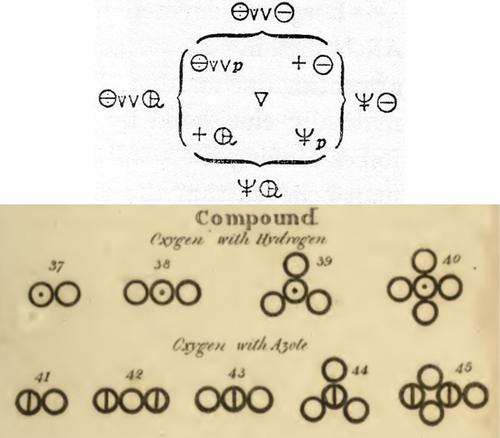当前位置:
X-MOL 学术
›
ChemPlusChem
›
论文详情
Our official English website, www.x-mol.net, welcomes your feedback! (Note: you will need to create a separate account there.)
The Transition from Alchemical to Modern Chemical Symbolism: from Bergman and Guiton de Morveau to Hassenfratz and Adet, Higgins, Richter, Dalton, and Berzelius
ChemPlusChem ( IF 3.4 ) Pub Date : 2024-04-19 , DOI: 10.1002/cplu.202400033 Curt Wentrup 1
ChemPlusChem ( IF 3.4 ) Pub Date : 2024-04-19 , DOI: 10.1002/cplu.202400033 Curt Wentrup 1
Affiliation

|
The alchemical symbols for metals, acids, bases and salts were still in everyday use in much of the 18th century. The modern notation, which we use today, is due to Berzelius, but the transition was long and arduous and took place between ca. 1775 and 1820 roughly simultaneously with but distinct from the Chemical Revolution. The notations of Bergman and Dalton (pictured) were stages of the process, which had to deal with the thorny questions of affinity, stoichiometry, the forces that bind atoms together in molecules, and the constitution of molecules.
中文翻译:

从炼金术到现代化学象征主义的转变:从伯格曼和吉顿·德·莫沃到哈森弗拉茨和阿代特、希金斯、里希特、道尔顿和贝泽利乌斯
在18世纪的大部分时间里,金属、酸、碱和盐的炼金符号仍在日常使用。我们今天使用的现代符号是贝采利乌斯提出的,但这种转变是漫长而艰巨的,发生在大约1775 年和 1820 年与化学革命大致同时发生,但又不同。伯格曼和道尔顿的符号(如图)是该过程的各个阶段,必须处理亲和力、化学计量、分子中原子结合在一起的力以及分子的构成等棘手问题。
更新日期:2024-04-19
中文翻译:

从炼金术到现代化学象征主义的转变:从伯格曼和吉顿·德·莫沃到哈森弗拉茨和阿代特、希金斯、里希特、道尔顿和贝泽利乌斯
在18世纪的大部分时间里,金属、酸、碱和盐的炼金符号仍在日常使用。我们今天使用的现代符号是贝采利乌斯提出的,但这种转变是漫长而艰巨的,发生在大约1775 年和 1820 年与化学革命大致同时发生,但又不同。伯格曼和道尔顿的符号(如图)是该过程的各个阶段,必须处理亲和力、化学计量、分子中原子结合在一起的力以及分子的构成等棘手问题。






























 京公网安备 11010802027423号
京公网安备 11010802027423号